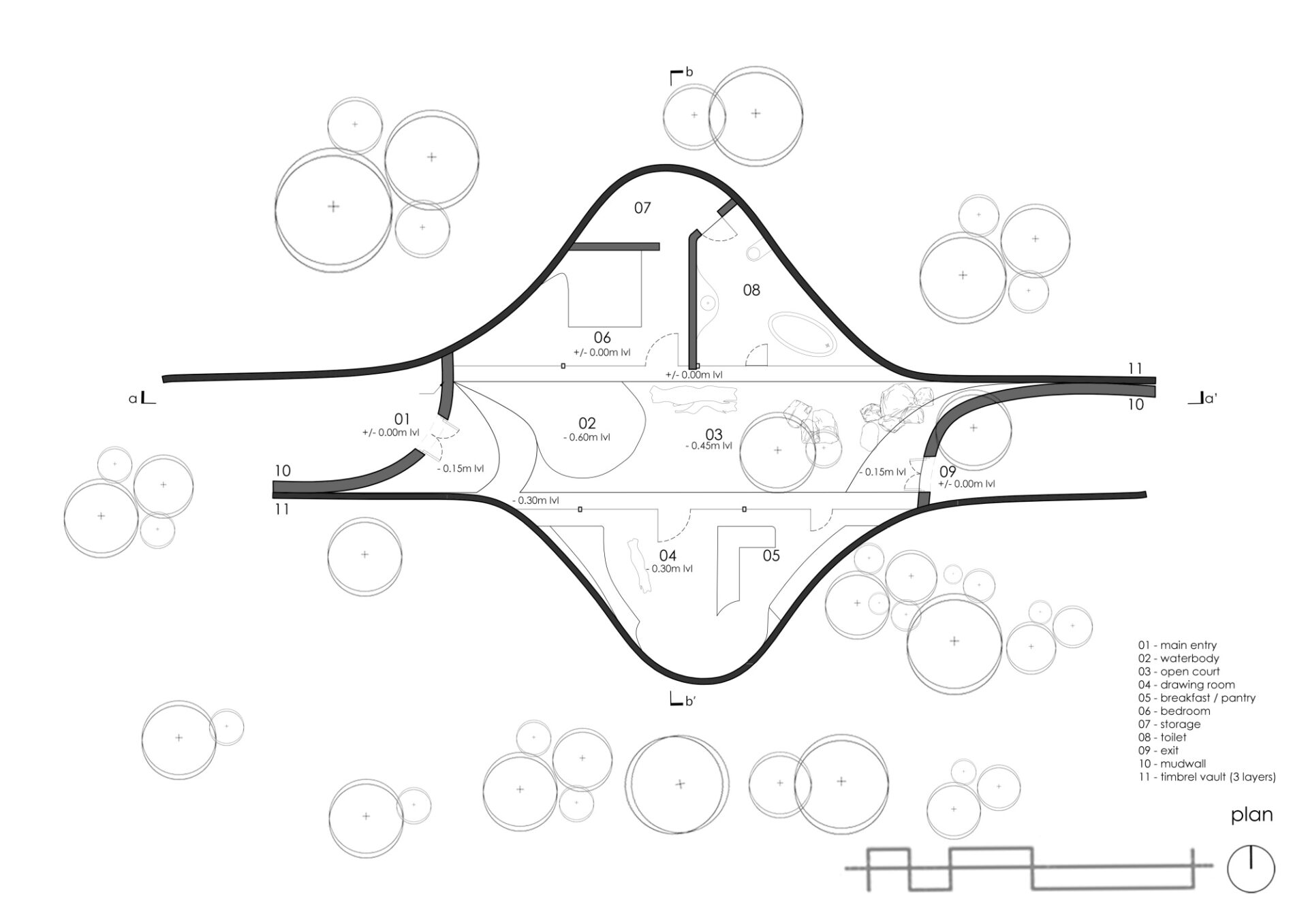The Wendy House Embraces Natural Materials and Nature
Earthscape Studio uses vault construction and simple material found around the site to create a haven amongst nature.
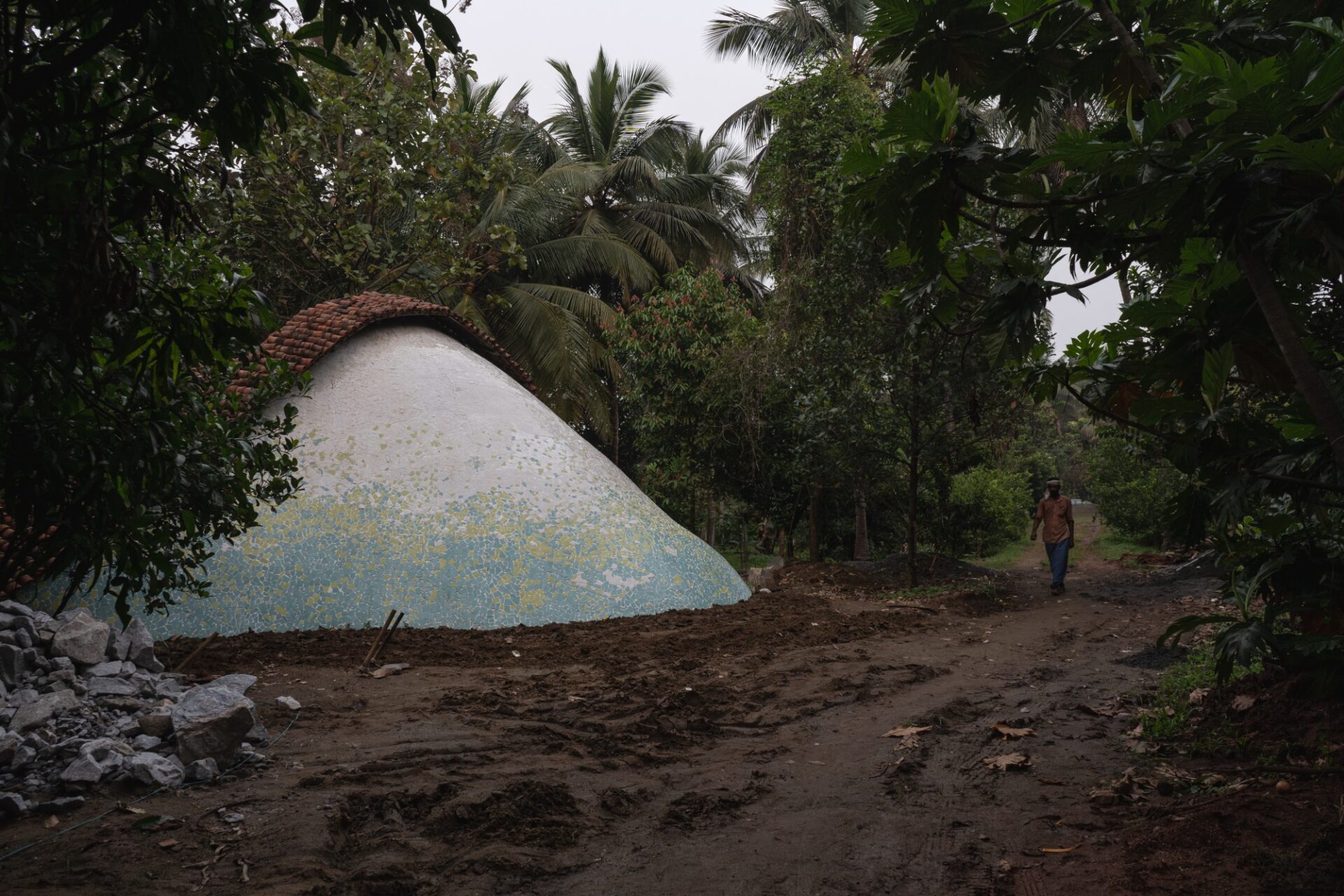 Right when we feel disillusioned by the lustreless blocks seen around cities, there comes sparks of creativity, true works of ingenuity that laps the boundaries of nature and tries to be the one thing architecture strives to be, truly timeless.
Right when we feel disillusioned by the lustreless blocks seen around cities, there comes sparks of creativity, true works of ingenuity that laps the boundaries of nature and tries to be the one thing architecture strives to be, truly timeless.
When a group of architects under Earthscape Studio have a strong belief that architecture is an art form that brings out soulfulness, their work would sooner than later reflect this approach if given the right parameters. And that was all that this client presented to Earthscape Studio, a beautiful private land of 8 acres of dense forest with an abundance of coconut trees, mango trees, nutmeg and teak etc. With a philosophy that abhorred destruction for creation, the architects focused on that part of the land for the location of the house without disturbing any flora.
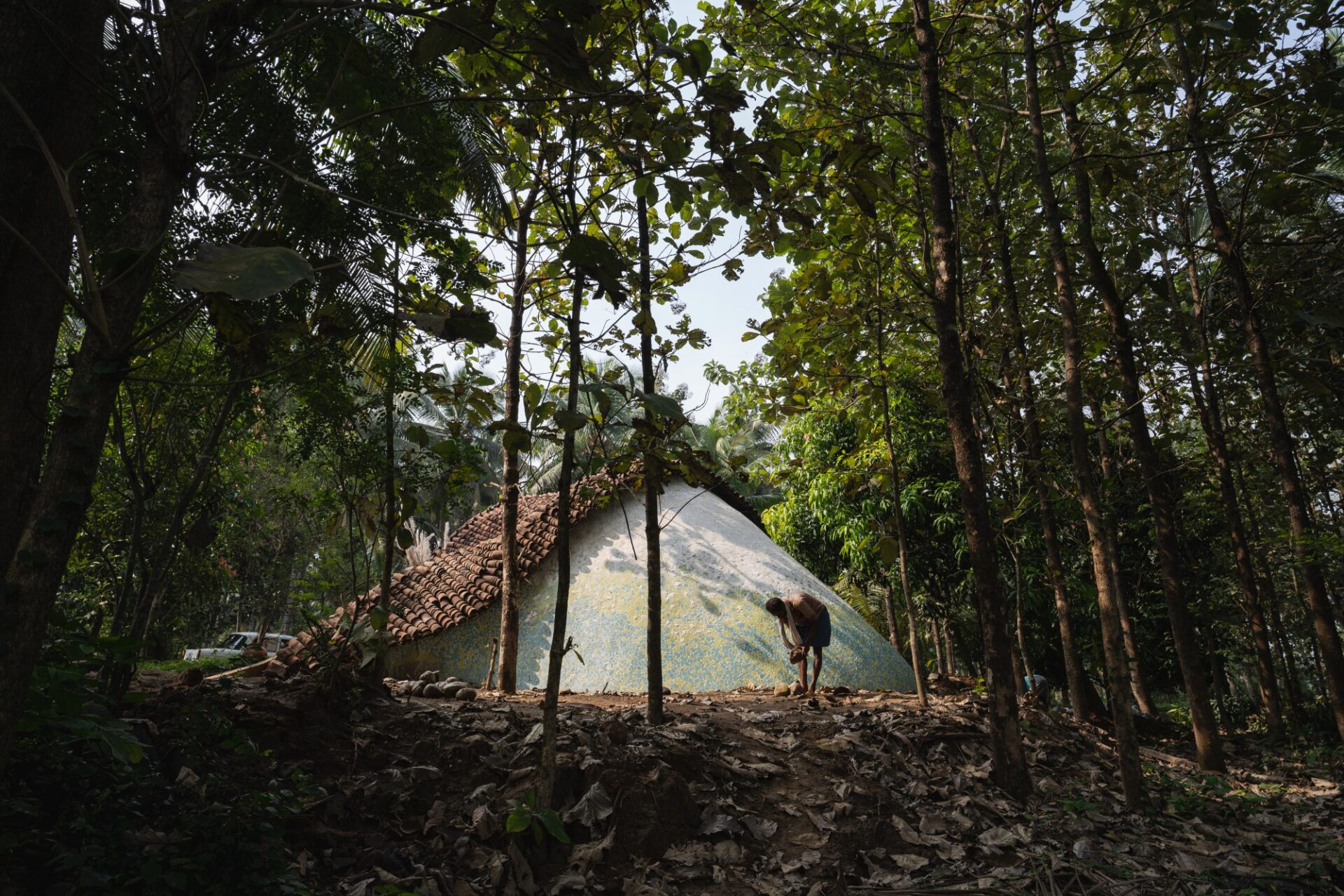 “Finding a perfect place for the farm house became difficult since we did not want to cut down any trees on site. By making a grid in site, the form of the building was achieved in accordance with the tree positioning,” says Petchimuthu Kennedy, the lead architect of Earthscape Studio, who pursued his architectural journey at Wallmakers since 2020.
“Finding a perfect place for the farm house became difficult since we did not want to cut down any trees on site. By making a grid in site, the form of the building was achieved in accordance with the tree positioning,” says Petchimuthu Kennedy, the lead architect of Earthscape Studio, who pursued his architectural journey at Wallmakers since 2020.
Extending their environment-sensitive approach, the architects strived to replace steel and concrete with local materials. Thus, shape and form of Wendy House took shape in a twin vault structure. “The vault form has been formed based on the position of the trees and natural surroundings which camouflages with the site. This timbre vault technique has been followed as per my mentor Ar. Senthil Kumar Doss’s catenary-based vault structures,” says Kennedy.
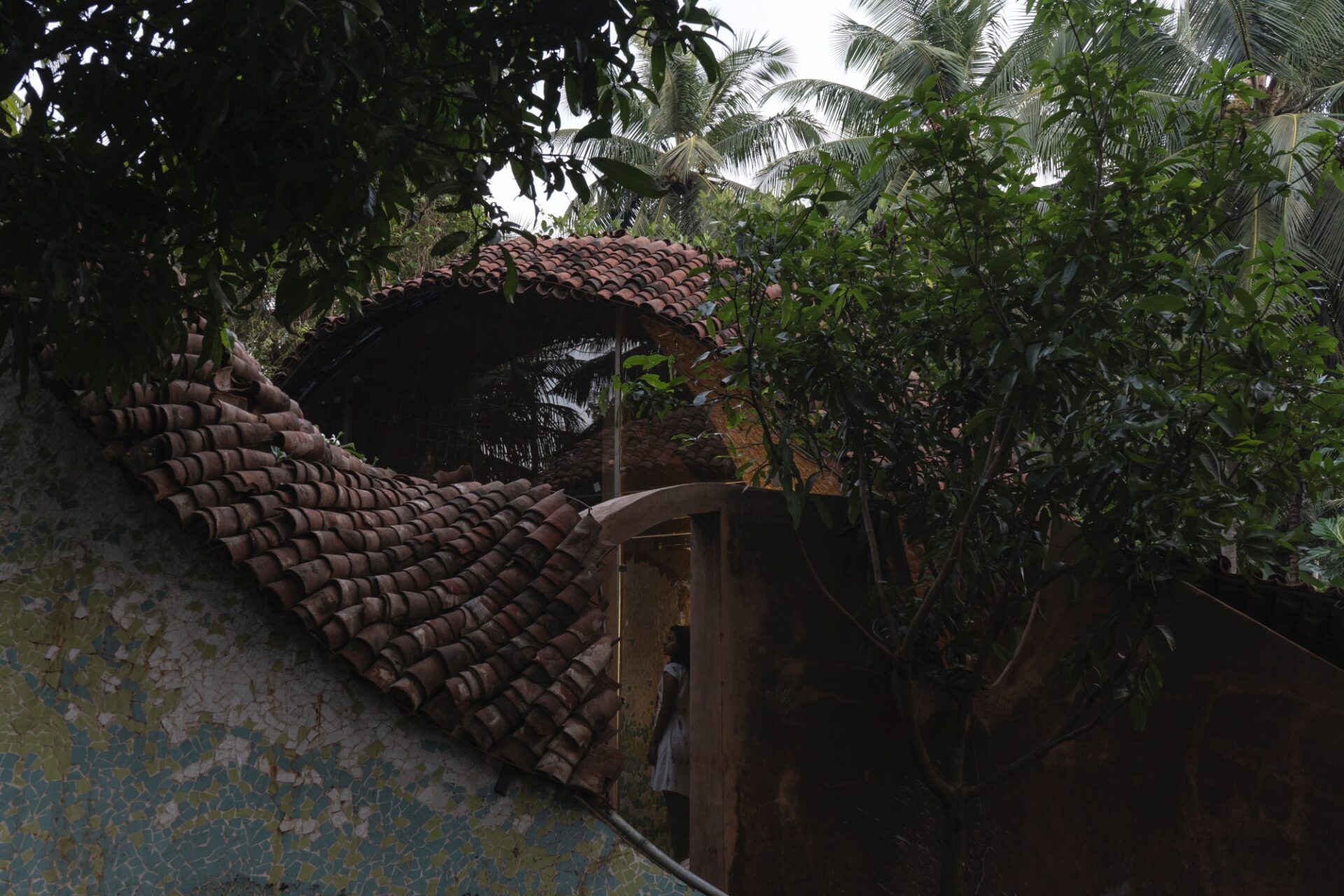 The Twin Vault structure was done with the dimension of 36’ and 32’ width with the height of 13’ and 11’ each.
The Twin Vault structure was done with the dimension of 36’ and 32’ width with the height of 13’ and 11’ each.
Kennedy strongly believes in making nature friendly built forms with strong backing and experimentation in using different nature friendly materials in the building.
“By using naturally formed materials in their original form makes the building sustainable and harmless to the environment. But making a building sustainable is not just by using all the natural materials like mud. As humans, we have already dumped the environment with an abundance of waste products like steel, plastics, papers, napkin waste etc. We firmly believe clearing all these wastes is also sustainable. So, making use of all these in a buildings, by reusing makes sure of a sustainable future. We give equal importance to the client as well as the nature where it satisfies both their needs and serves its purpose.”
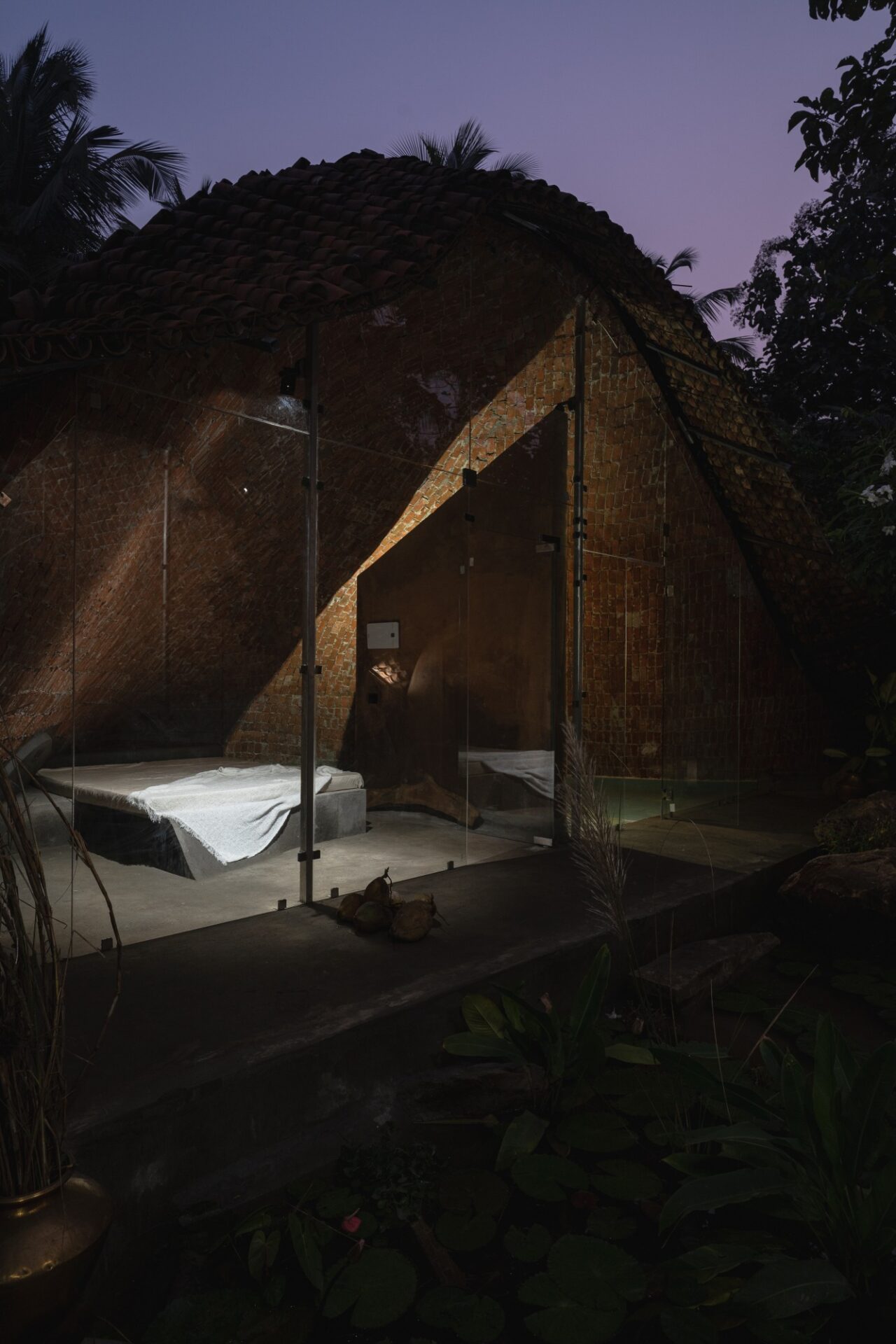
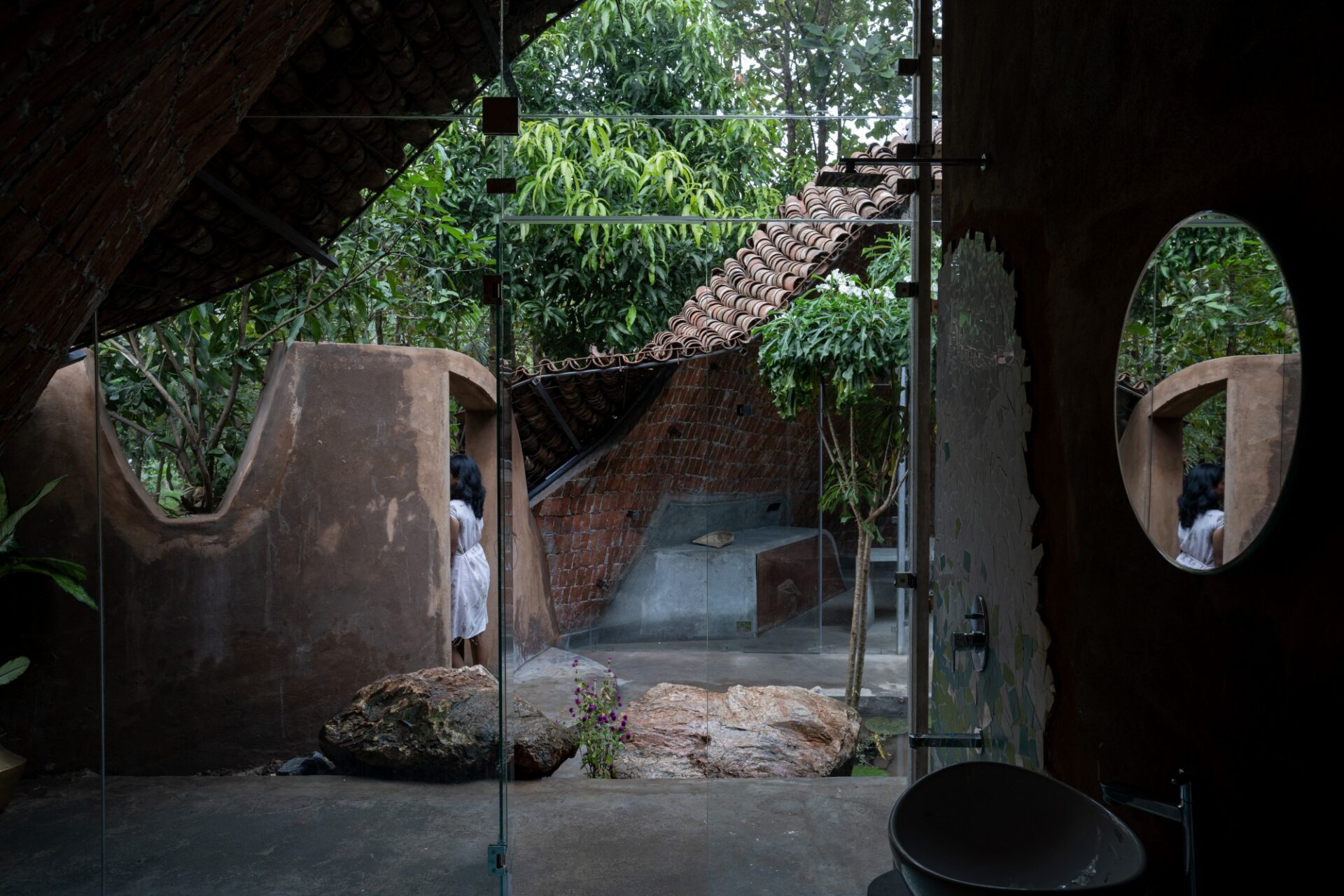 “The vault form has been formed based on the position of the trees and natural surrounding which camouflages with the site. A beautiful courtyard with a small water body has been formed in between the twin vault where the spaces are transparent and open to the courtyard. This courtyard creates natural lighting inside the spaces. Different levels have been created in the building in accordance with the site contour,” explains Kennedy.
“The vault form has been formed based on the position of the trees and natural surrounding which camouflages with the site. A beautiful courtyard with a small water body has been formed in between the twin vault where the spaces are transparent and open to the courtyard. This courtyard creates natural lighting inside the spaces. Different levels have been created in the building in accordance with the site contour,” explains Kennedy.
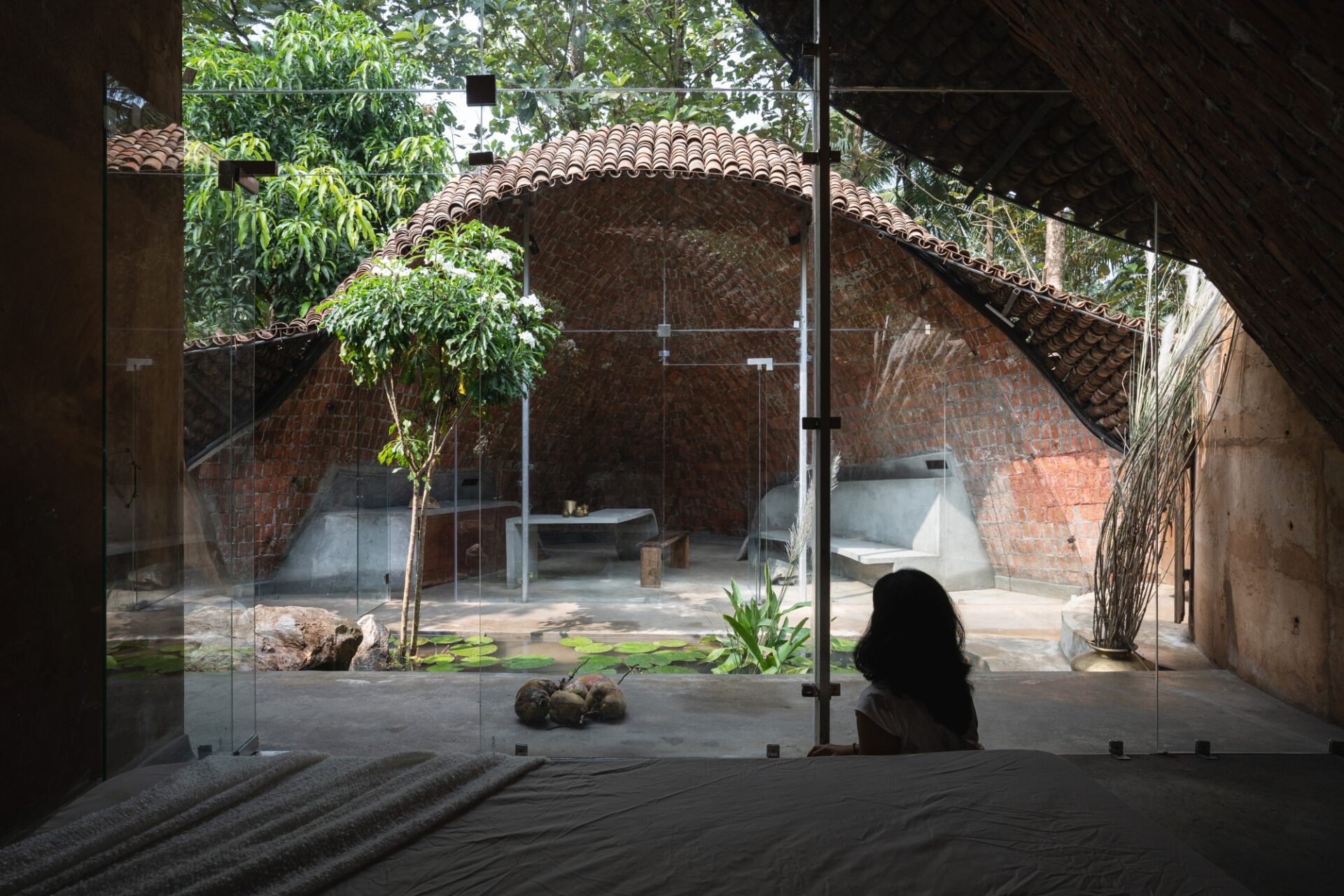
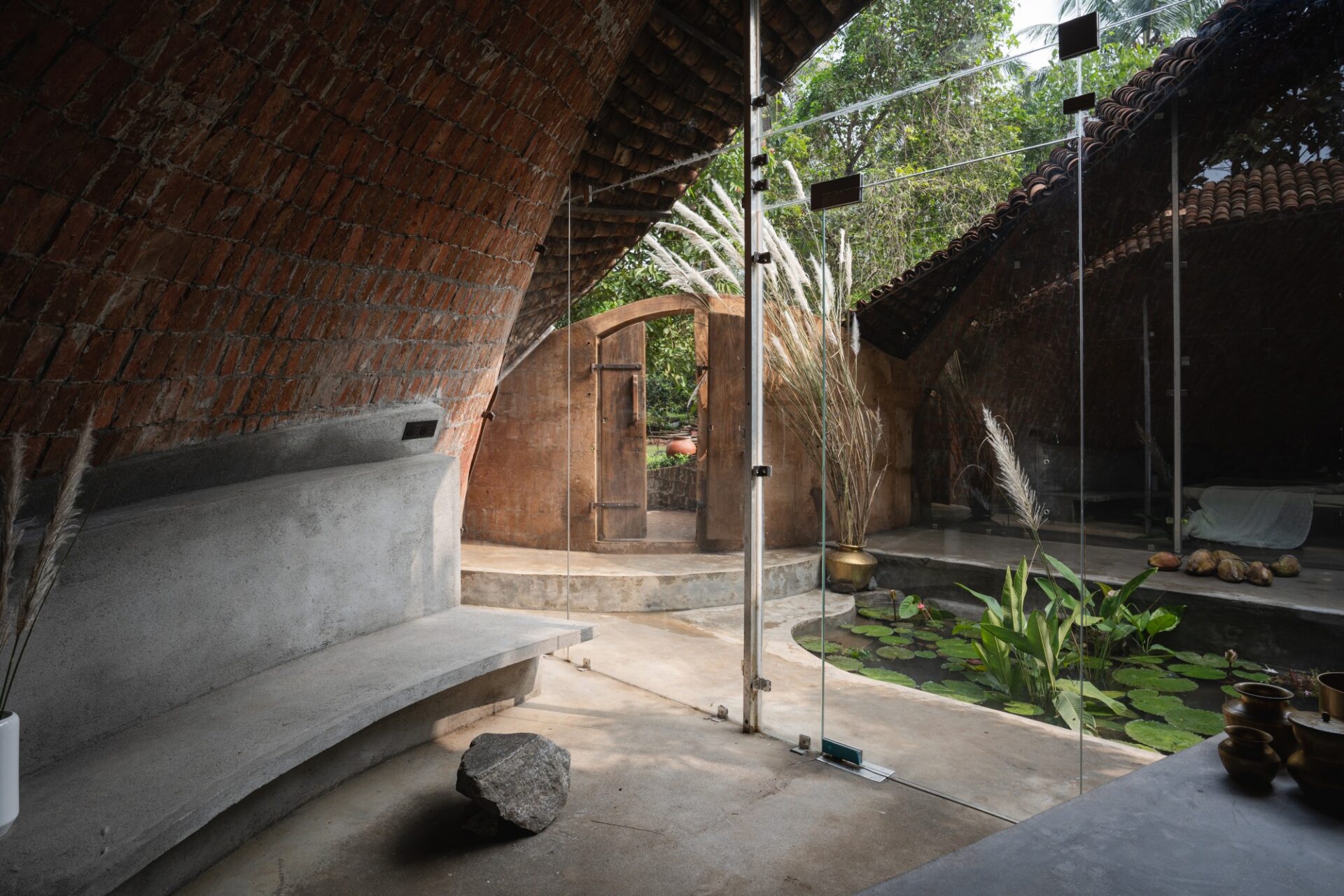 Expertly camouflaged by nature, the vaulted formation is so designed that it seems like an extension of nature, with a small opening leading one inside the house. Within the house too, there is minimal interventions, an open courtyard with a water body that divides the living spaces, no large barriers but open spaces that flow from one to another. A perfect example of minimal living.
Expertly camouflaged by nature, the vaulted formation is so designed that it seems like an extension of nature, with a small opening leading one inside the house. Within the house too, there is minimal interventions, an open courtyard with a water body that divides the living spaces, no large barriers but open spaces that flow from one to another. A perfect example of minimal living.
Kennedy explains the entire process of building: Sithu kal – small bricks of three layers have been used for the vault. These bricks are used for the madras terrace roof technique in South India, which is now not being used. The community who makes these bricks became unemployed. By using this material, we made sure that the community of brick makers had work to sustain themselves. Waste broken tiles from factories have been reused for the fourth layer to avoid expensive waterproofing chemicals. Reused rods have been used for the frame works and supports of the vault during construction which has been further used for building the built- in-furniture like sofa, breakfast counter, bed and also for the frame work of mudga (reused mudga tiles) roofing above. This mudga tiles have been sourced from around 15 kms radius making it a locally available sustainable material. Wood for furniture and door has been used from the waste wood which was also locally sourced. To enclose the twin vault, poured earth wall has been built where the mud has been collected from site.
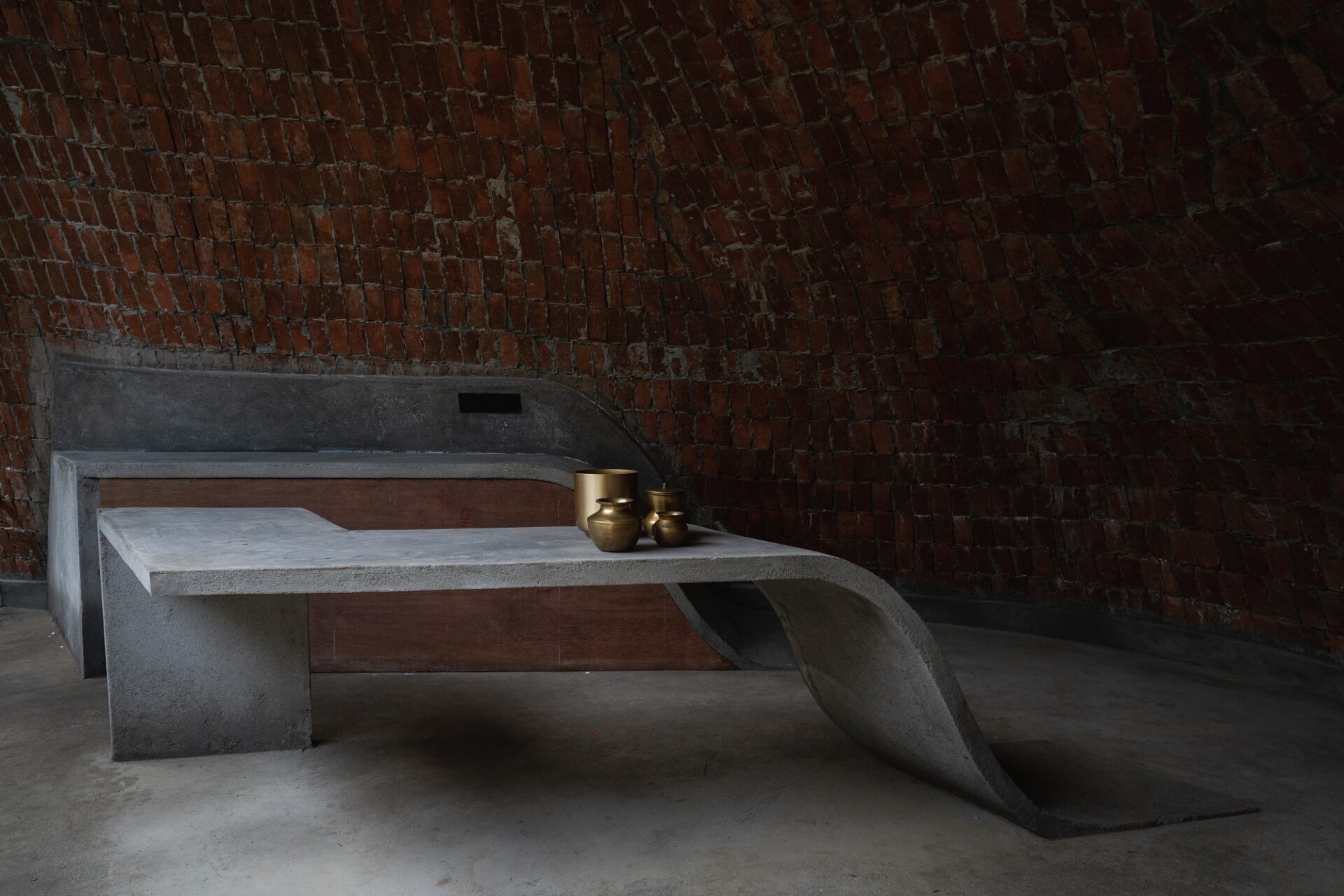
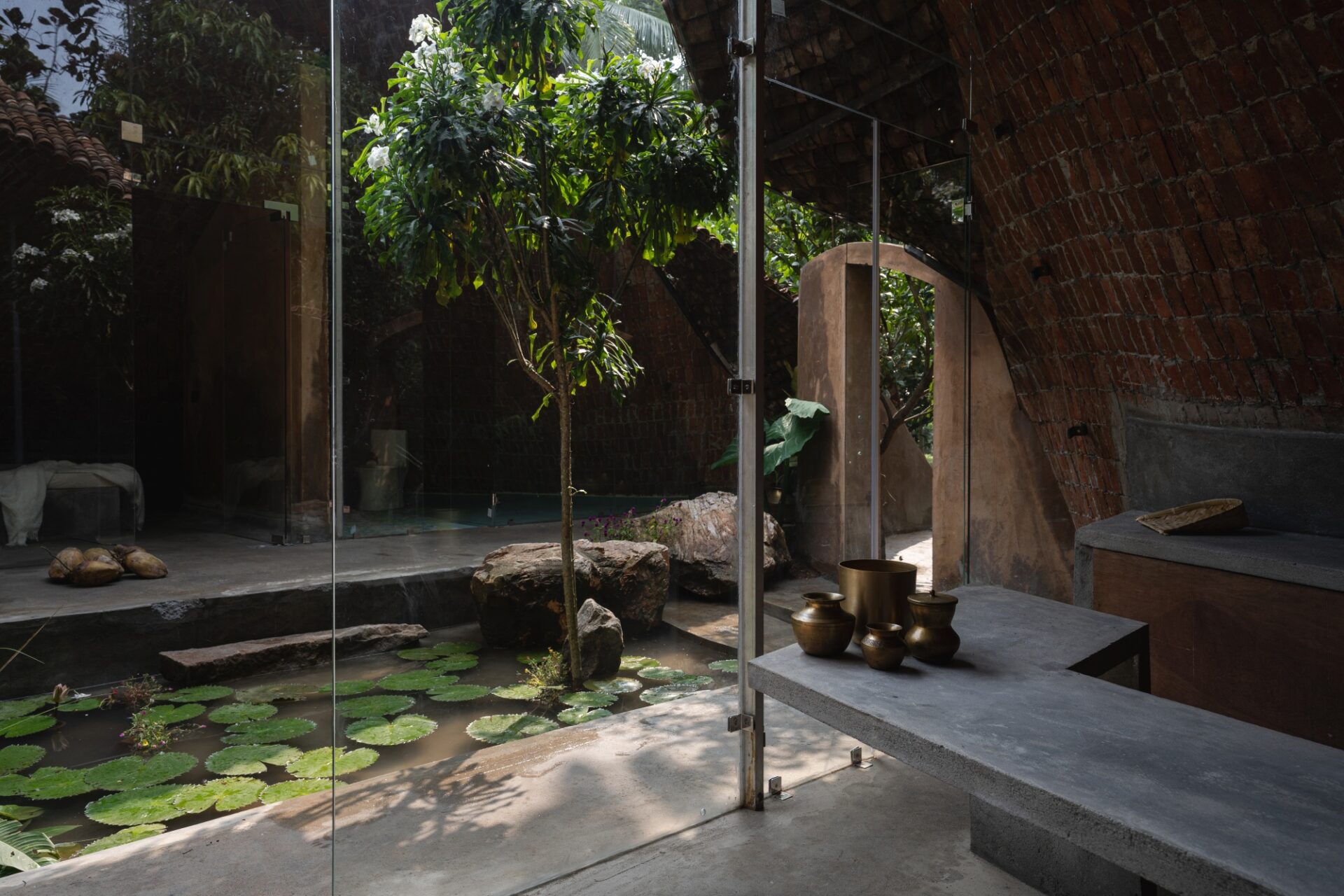 “Throughout the process, my mentor Vinu Daniel guided us, encouraging new techniques and methods and helping us with valuable insights. The total construction period was eight months, during which we stayed at site,” reveals Kennedy.
“Throughout the process, my mentor Vinu Daniel guided us, encouraging new techniques and methods and helping us with valuable insights. The total construction period was eight months, during which we stayed at site,” reveals Kennedy.
“Experimenting different materials makes the construction process interesting and the building becomes nature friendly and sustainable. The main ideology and concept of this farm house is to bring out a nature friendly building and using all locally available materials making it sustainable,” he says.
The Wendy House has minimum impact on the environment but encourages and impacts the architectural society to explore its core values of sustainable construction to attain maximum goals.
Project Name: The Wendy House
Office Name: Earthscape Studio
Office Website: www.earthscapestudio.com
Contact email: earthscapestudios@gmail.com
Firm Location: Sivakasi,Tamilnadu
Completion Year: 2023
Gross Built Area (m2/ ft2): 1100 sq.ft
Project Location: Kozhinjampara, Palakad, Kerala
Building Function: Farm House
Lead Architects: Petchimuthu Kennedy
Team: Rigesh niganth, Shivani Saran S K, Maria Suvicksha Victor, Siddharth Baji, Jeffril J Kumar, Naveen Saminathan, Aparajita Vibu, Krishnaraj, Mohamed Aashik
To Contact: petchimuthu18498@gmail.com
Photo Credits: Syam Sreesylam


